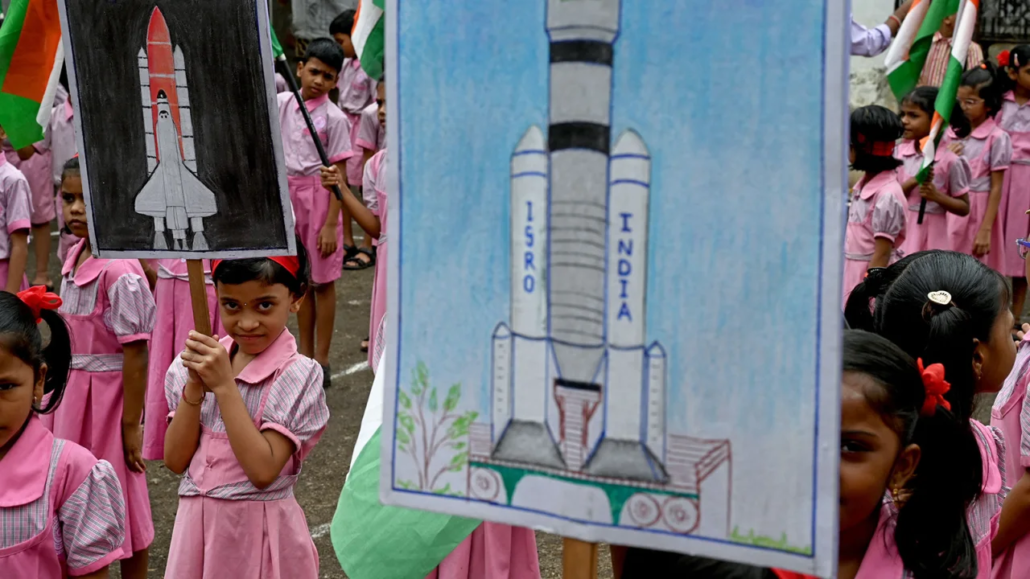India has landed its Chandrayaan-3 spacecraft on the moon, becoming only the fourth nation ever to accomplish such a feat.
The mission could cement India’s status as a global superpower in space. Previously, only the United States, China and the former Soviet Union have completed soft landings on the lunar surface.
Chandrayaan-3’s landing site is also closer to the moon’s south pole than any other spacecraft in history has ventured. The south pole region is considered an area of key scientific and strategic interest for spacefaring nations, as scientists believe the region to be home to water ice deposits.
The water, frozen in shadowy craters, could be converted into rocket fuel or even drinking water for future crewed missions.
India’s lunar lander consists of three parts: a lander, rover and propulsion module, which provided the spacecraft all the thrust required to traverse the 384,400-kilometer (238,855-mile) void between the moon and Earth.
The lander, called Vikram, completed the precision maneuvers required to make a soft touchdown on the lunar surface after it was ejected from the propulsion module. Tucked inside is Pragyan, a small, six-wheeled rover that will deploy from the lander by rolling down a ramp.
Vikram used its on board thrusters to carefully orient itself as it approached the lunar surface, and it slowly throttled down its engines for a touchdown just after 6 p.m. IST (8:30 a.m. ET) as applause erupted from the mission control room.
The lander, which weighs about 1,700 kilograms (3,748 pounds), and 26-kilogram (57.3-pound) rover are packed with scientific instruments, prepared to capture data to help researchers analyze the lunar surface and deliver fresh insights into its composition.
A global moon rush
Working alongside allies such as the United States and France, India is part of a second wave of emerging space powers. The country’s space program has become one of the world’s busiest in its development of exploratory space technology.
Chandrayaan-3 has been a point of national pride and widespread interest across India. Crowds gathered at the launchpad at Satish Dhawan Space Centre in Sriharikota in Andhra Pradesh state to watch the mission take flight in July. On Wednesday, more than 8 million people tuned in to view a livestream of the landing.

India is also a signatory of the United States’ Artemis Accords, a document that outlines proposed rules of the road for future lunar exploration. Russia and China have not signed the accords.
Source: CNN
